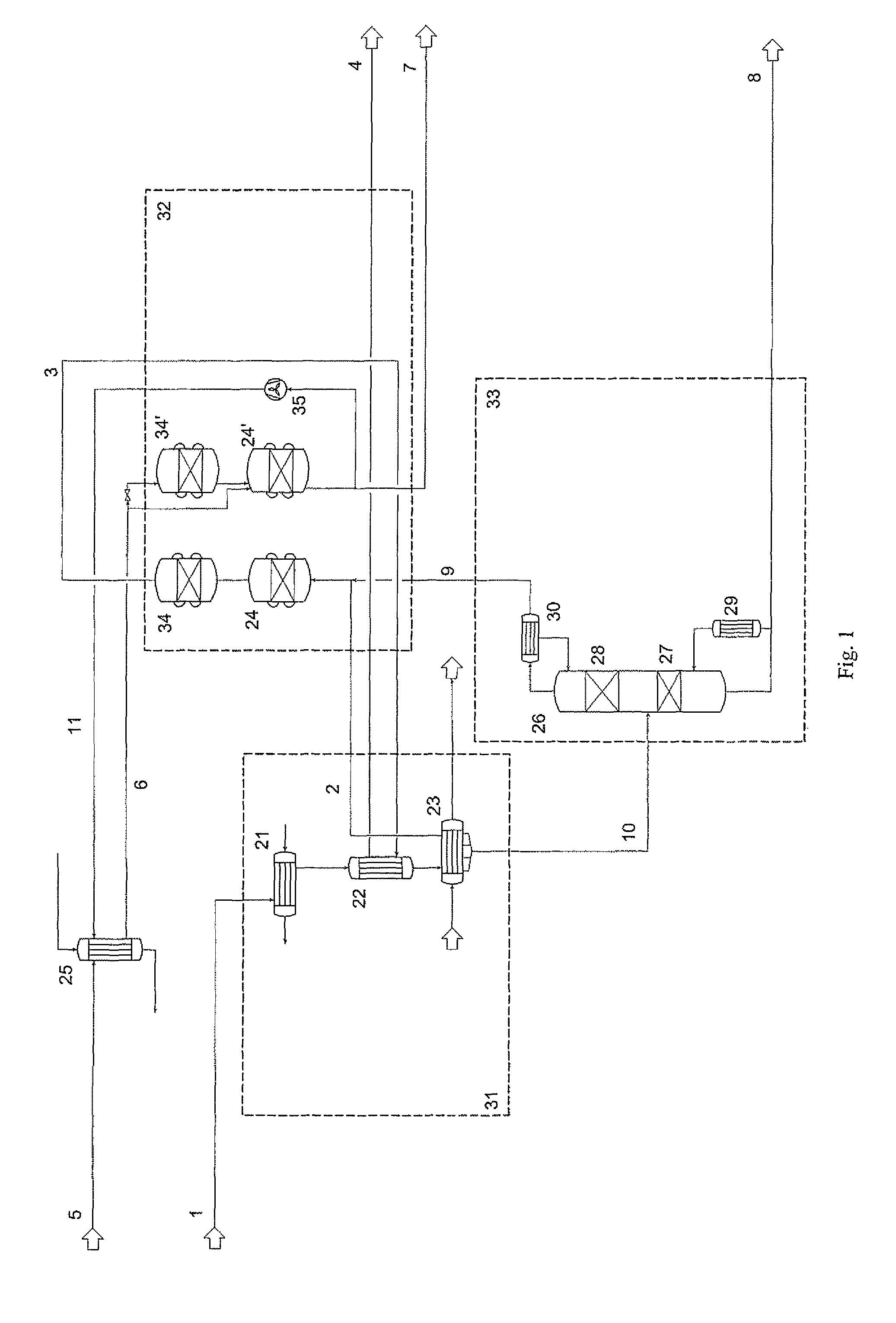Processes for removing organic components from gases containing hydrogen chloride
a technology of hydrogen chloride and organic components, which is applied in the preparation of isocyanic acid derivatives, separation processes, lighting and heating apparatus, etc., can solve the problems of significant hcl and phosgene, and significant subsequent costs for the conversion of phosgene and hcl
- Summary
- Abstract
- Description
- Claims
- Application Information
AI Technical Summary
Benefits of technology
Problems solved by technology
Method used
Image
Examples
example
[0046]Referring to FIG. 1, in a first stage 31, an initial crude gas stream 1 is precooled in a cooler 21 and passed through the recuperator 22 to provide a crude gas stream having a temperature below 10° C. In this example, the initial crude gas stream comprised a hydrogen chloride gas from a TDI production. Organic impurities such as chlorobenzene, hexachlorobenzene and / or orthodichlorobenzene are partly condensed in the condenser 23 at a temperature of −35° C. and conveyed away as stream 10 (condensate). At the same time, HCl and optionally phosgene are dissolved in the condensate as already described above.
[0047]In a second stage 32, the prepurified crude gas stream 2 is passed over an adsorber bed 24 where organic impurities are further reduced.
[0048]The loaded adsorber bed 24′, which is operated alternately with the adsorber bed 24, is purified (regenerated) with an inert gas 6 which is composed of fresh inert gas 5 and a return stream 11 and is preheated in the heat exchanger...
PUM
| Property | Measurement | Unit |
|---|---|---|
| temperature | aaaaa | aaaaa |
| temperature | aaaaa | aaaaa |
| temperature | aaaaa | aaaaa |
Abstract
Description
Claims
Application Information
 Login to View More
Login to View More - R&D
- Intellectual Property
- Life Sciences
- Materials
- Tech Scout
- Unparalleled Data Quality
- Higher Quality Content
- 60% Fewer Hallucinations
Browse by: Latest US Patents, China's latest patents, Technical Efficacy Thesaurus, Application Domain, Technology Topic, Popular Technical Reports.
© 2025 PatSnap. All rights reserved.Legal|Privacy policy|Modern Slavery Act Transparency Statement|Sitemap|About US| Contact US: help@patsnap.com


